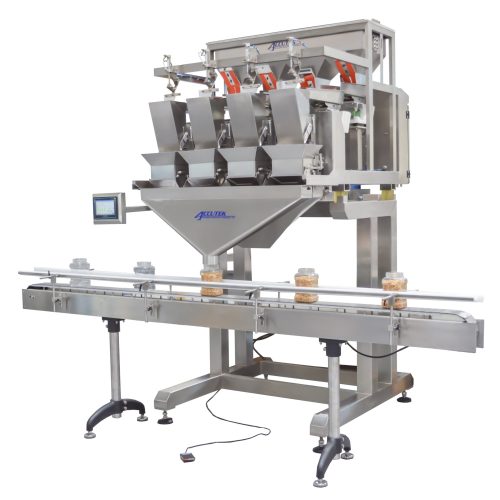The Impact of Automatic Packaging Machinery and Filling Machines

In the modern era of industrial automation, the role of automatic packaging machinery has become indispensable. Among the various types of packaging equipment, filling machines hold a prominent place due to their critical function in numerous industries. From food and beverage to pharmaceuticals and cosmetics, filling machines are the backbone of the packaging process, ensuring efficiency, accuracy, and hygiene. This article delves into the evolution, types, and advantages of automatic packaging machinery, with a special focus on filling machines.
The Evolution of Automatic Packaging Machinery
The journey of automatic packaging machinery dates back to the early 20th century, with significant advancements in the past few decades. Initially, packaging processes were labor-intensive, prone to errors, and inconsistent in quality. The advent of semi-automatic machines marked the first step towards automation, enabling higher productivity and better control. However, it was the development of fully automatic packaging machinery that revolutionized the industry.
Technological innovations, such as microprocessors and programmable logic controllers (PLCs), have propelled automatic packaging machinery to new heights. Modern machines are equipped with sophisticated sensors, robotics, and artificial intelligence, which enhance their performance and adaptability. These advancements have not only improved the speed and accuracy of packaging processes but have also reduced human intervention, minimizing the risk of contamination and errors.
Types of Filling Machines
Filling machines are a subset of automatic packaging machinery specifically designed to accurately dispense products into containers. They are categorized based on the type of product they handle and the filling mechanism employed. The primary types of filling machines include:
-
Liquid Filling Machines: These machines are designed for liquid products such as beverages, oils, and sauces. They can be further classified into volumetric, gravity, pressure, and piston fillers, depending on the viscosity and nature of the liquid being filled.
-
Powder Filling Machines: These are used for filling powdered products like spices, flour, and pharmaceutical powders. They typically use auger or vacuum technology to ensure precise filling and minimal spillage.
-
Solid Filling Machines: These machines handle solid products such as tablets, candies, and granules. Multi-head weighers and counting machines are common in this category, providing accurate weight-based or count-based filling.
-
Paste Filling Machines: Designed for products with semi-solid consistency, like creams, gels, and pastes, these machines ensure smooth and consistent filling without air pockets or bubbles.
-
Aerosol Filling Machines: Specialized for products packaged in aerosol cans, these machines handle the filling of both the product and the propellant, ensuring safe and efficient packaging.
Advantages of Automatic Filling Machines
The integration of filling machines into packaging lines offers numerous benefits that enhance overall operational efficiency and product quality. Some of the key advantages include:
-
Increased Efficiency: Automatic filling machines significantly speed up the packaging process, handling large volumes of products with minimal downtime. This leads to higher throughput and meets the growing demand in various industries.
-
Consistency and Accuracy: Advanced filling machines are equipped with precision controls and sensors that ensure consistent fill levels and accurate measurements. This reduces wastage and maintains product uniformity.
-
Cost Savings: While the initial investment in automatic filling machinery may be high, the long-term savings in labor costs, reduced waste, and increased productivity justify the expenditure. Automated systems also reduce the likelihood of costly errors and rework.
-
Enhanced Hygiene: In industries like food and pharmaceuticals, maintaining hygiene is paramount. Automatic filling machines reduce human contact with the product, minimizing the risk of contamination and adhering to strict regulatory standards.
-
Flexibility and Scalability: Modern filling machines are designed to handle a wide range of products and container sizes. They can be easily adjusted or upgraded to accommodate new products, making them a versatile choice for manufacturers.
-
Improved Safety: Automation reduces the need for manual handling of products, which can be hazardous in some cases. Filling machines are designed with safety features that protect workers and ensure compliance with safety regulations.
Conclusion
The evolution of automatic packaging machinery, particularly filling machines, has transformed the manufacturing landscape. By enhancing efficiency, accuracy, and hygiene, these machines play a pivotal role in meeting the high standards of today's competitive markets. As technology continues to advance, the future of filling machines promises even greater innovations, driving the industry towards more sustainable and efficient packaging solutions. Whether it's a small-scale operation or a large industrial setup, investing in automatic filling machines is a strategic move that yields significant long-term benefits.
What's Your Reaction?








![Wireless Connectivity Software Market Size, Share | Statistics [2032]](https://handyclassified.com/uploads/images/202404/image_100x75_661f3be896033.jpg)



